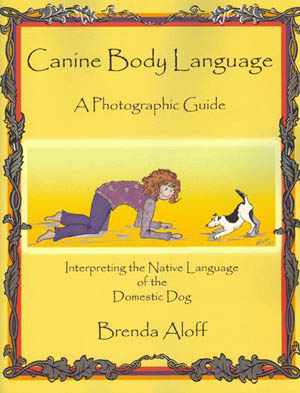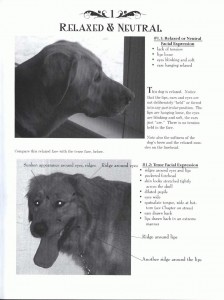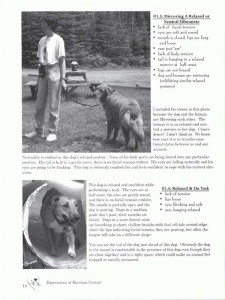 Saffron, our dog, and I had a great walk yesterday down by the Puget Sound. She got lots of smiles and comments from people and it got me thinking about why.
Saffron, our dog, and I had a great walk yesterday down by the Puget Sound. She got lots of smiles and comments from people and it got me thinking about why.
So, I started paying closer attention to her body language and realized she was absolutely broadcasting joy. Her ears were forward, her face was relaxed, her mouth was open, but relaxed, her eyes were soft and not glassy, and her tail was up and relaxed. Clearly people could tell she was having fun. But, it’s not always clear what our dogs are telling us with body language.
We’re two very different species—canine and simian. Here’s a book that can help you bridge that divide. Canine Body Language: A Photographic Guide Interpreting the Native Language Of The Domestic Dog, by Brenda Aloff is an amazing resource. (DogWise published the book and is a great source for harder to come by books on dogs. They might not be the cheapest, but supporting them enables them to provide a thoughtful and thorough selection of excellent books and other items.)
I recommend Canine Body Language to anyone who shares their life with a dog. Unlike other books I’ve seen, this one uses tons great photographs to illustrate dogs’ body language. It does a very thorough job with 370 pages of photos and straight forward text to clarify dogs’ sometimes very subtle body language. It’s very readable and clear.
Even if you feel you’re well versed in canine body language, I think you’ll learn a lot from the book. And for the average person, Canine Body Language, will open a whole world of understanding of what your dog communicates on a daily basis. The book has made trips to the dog park fascinating and educational to see real time examples of canine communication. And it’s allowed me to be closer in tune with what Saffron is thinking and feeling. I have found it invaluable:
- in avoiding altercations between dogs
- in distinguishing play behavior from aggressive behavior
- in understanding when Saffron is too stressed
- in deciding whether dogs we encounter on walks are likely to be leash aggressive or, on the flip side, likely to be afraid of Saffron
- in recognizing rude behavior from other dogs so I can let Saffron warn them in dog language
Examples of the great photos and clear descritptions:


Another good one is “How to Speak Dog”. It has more drawings than photos, so the dog’s posture can be emphasized. I forget the author. I found it very enlightening, esp. about how the height of the dog’s tail when wagging is a clue about his opinion about what’s happening.